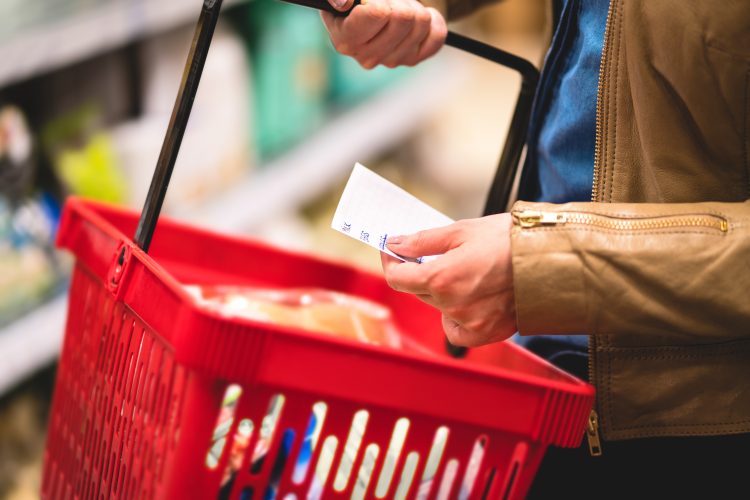Majority of consumers expect to see a rise in food prices
- Like
- Digg
- Del
- Tumblr
- VKontakte
- Buffer
- Love This
- Odnoklassniki
- Meneame
- Blogger
- Amazon
- Yahoo Mail
- Gmail
- AOL
- Newsvine
- HackerNews
- Evernote
- MySpace
- Mail.ru
- Viadeo
- Line
- Comments
- Yummly
- SMS
- Viber
- Telegram
- Subscribe
- Skype
- Facebook Messenger
- Kakao
- LiveJournal
- Yammer
- Edgar
- Fintel
- Mix
- Instapaper
- Copy Link
Posted: 14 March 2024 | Grace Galler | No comments yet
According to research, 64 percent of US consumers have predicted that food prices will rise over the next 12 months.


A total of 64 percent of US consumers have predicted that food prices will rise over the next year, according to a new study.
Surveyed back in back February, US consumers’ average predicted price increase for food stood at 3.7 percent.
The February Consumer Food Insights Report was carried out by Purdue University’s Center for Food Demand Analysis and Sustainability and spoke to 1,200 consumers across the US.
During the 26 months when the survey was completed, the US observed high food inflation that reached 11.3 percent in 2022.
“Even though food inflation has cooled significantly since then, dropping to 2.6 percent this month, inflation remains positive. Consumers, on average, are predicting food price inflation to rise a bit in the coming year,” said Joseph Balagtas, lead author of the report and Professor of Agricultural Economics at Purdue and Director of CFDAS.
To carry out the research, the consumer responses were separated into two groups: those that predicted food prices to fall or stay the same in the coming year, and those that predicted prices to rise.
The researchers also found that food price expectations are correlated with food values. In January 2022, the researchers started to track food values, since then they found that consumers “consistently rated taste and affordability as the most important food values, two to three times more important than environmental impact and social responsibility”. Meanwhile, consumers predicting prices to rise were found to typically value affordability slightly higher and environmental and social responsibility slightly lower than do those who predicted prices to fall.
“One interesting result is the importance of affordability to those who predict food prices will go up. It makes sense that people who expect prices to rise would also key in on the importance of food affordability,” said Balagtas.
Looking at food expenditures, consumer food spending rose to a weekly average of $195 in February, up seven percent from February 2022, ecplained said Elijah Bryant, a Survey Research Analyst at CFDAS and Co-Author of the report.
The most recent Consumer Price Index measure of year-over-year inflation for groceries (food at home) sat at was 1.2 percent in January 2024, according to the Bureau of Labor Statistics. However, food from restaurants (food away from home), the figure was 5.1 percent. According to the study authors, food-away-from-home (FAFH) inflation has remained higher than food-at-home (FAH) since March 2023.
“Since March 2022, the survey has asked consumers how frequently they eat meals from restaurants, fast-food places or carryout in the last seven days. “There has been a slight downward trend in the average number of FAFH meals eaten since May and June 2023, when FAFH and FAH inflation began to really diverge. As the cost of eating out continues to grow at a faster rate than groceries, we are seeing consumers eating out less and cooking at home more,” said Bryant.
In addition, Bryant revealed that the households that spend more money every week on food “tend to predict higher future food prices”, and reasons that “these households may be more aware of food price trends as they spend more at the grocery store and at restaurants every week”.
Looking ahead to the rest of 2024, the US Department of Agriculture (USDA) predicts in its Food Price Outlook for 2024 that food away-from-home prices to increase by 5 percent and food-at-home prices to increase by only 1.6 percent. Meanwhile, the Purdue researchers estimate food insecurity at 12.4 percent, down 0.8 of a percent from January and found that food insecurity rates have stayed at around 13 percent since September 2023.
“Aggregating all 26 months of data, we see Supplemental Nutrition Assistance Program (SNAP) participants are less likely to predict rising food prices (59%) than nonparticipants (64%),” Bryant explained.
“Interestingly, it seems those less reliant on federal food assistance are more pessimistic about food prices in the coming year,” he continued







